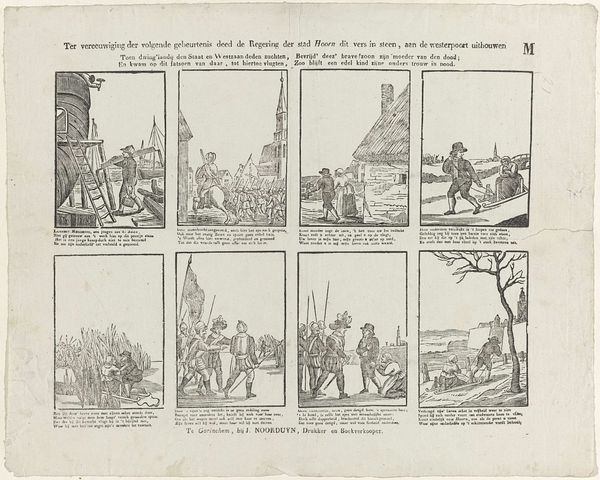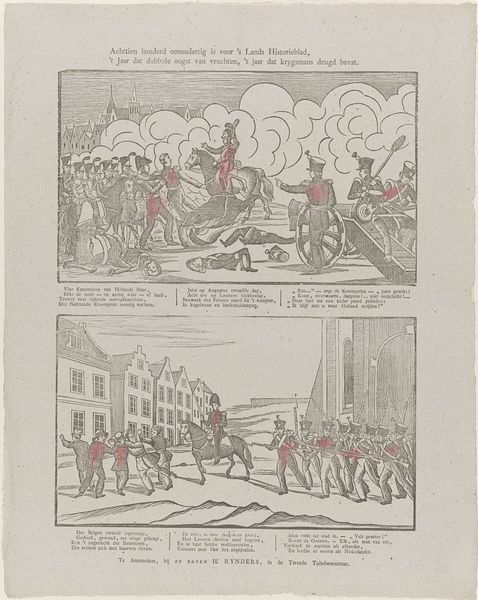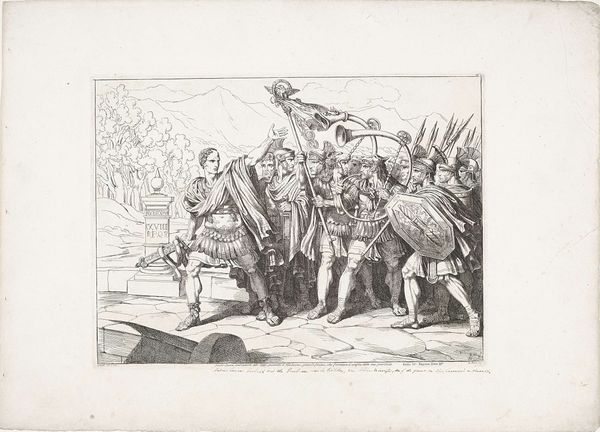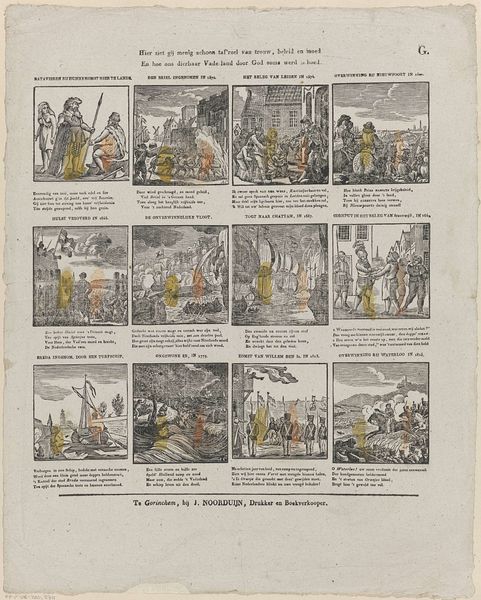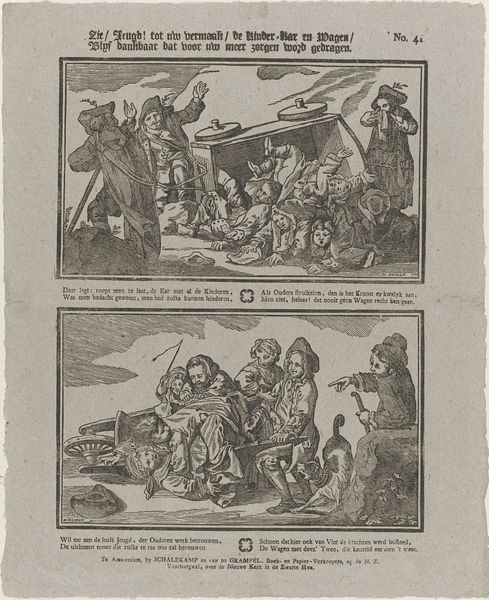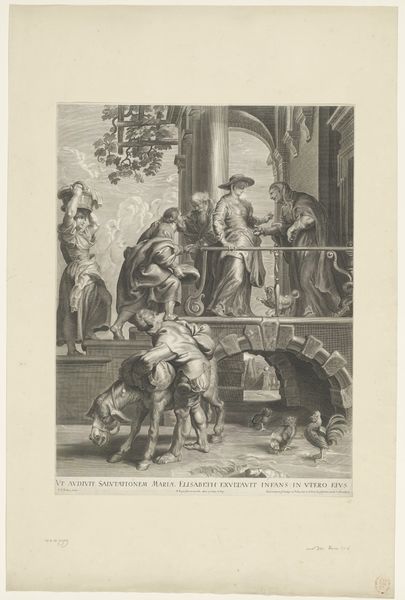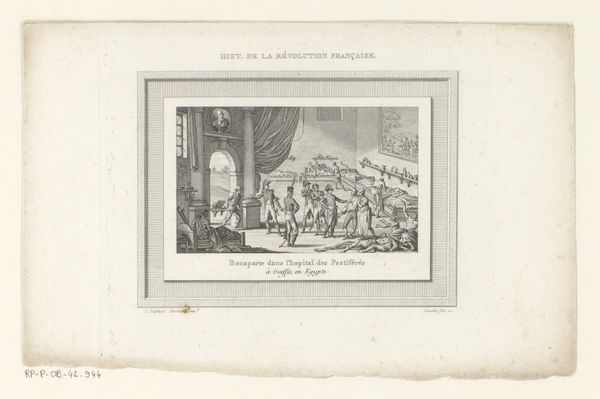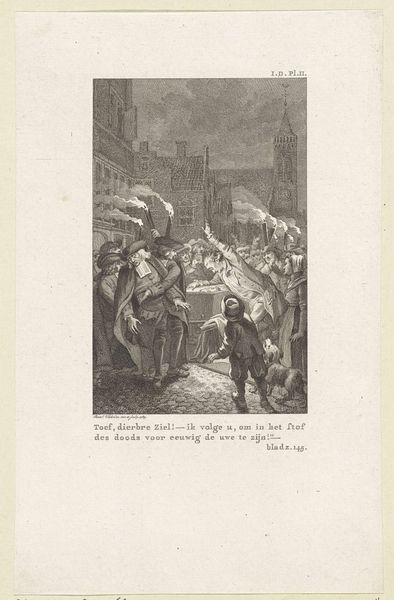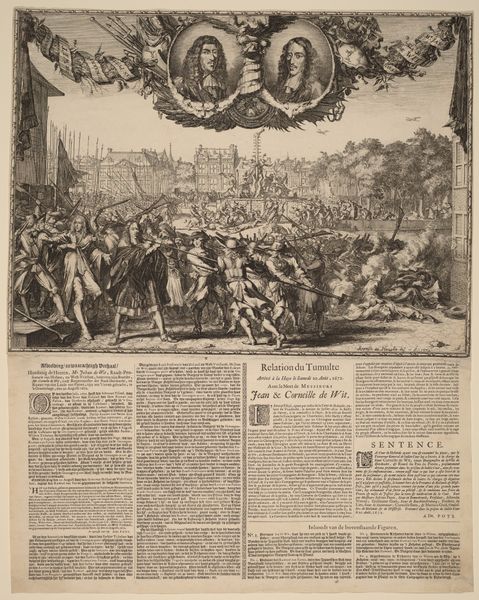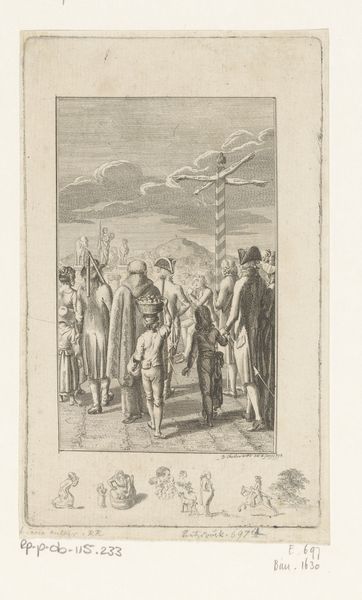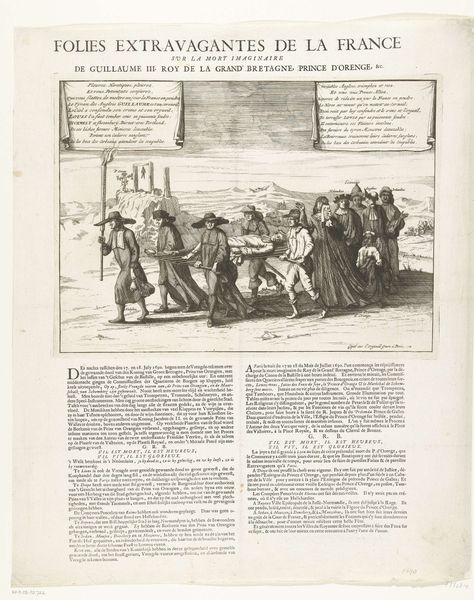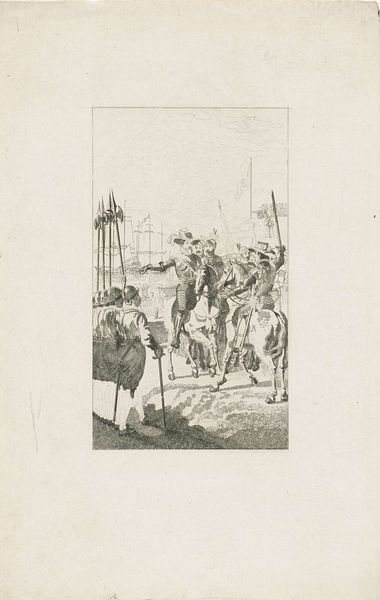
De eerste prent vertoont het strijden / waarbij paard en ruiter viel. / De andere schetst het uur der vreugde / voor de trouwe heldenziel 1831 - 1854
0:00
0:00
ervehrynders
Rijksmuseum
print, engraving
#
comic strip sketch
#
narrative-art
# print
#
old engraving style
#
romanticism
#
history-painting
#
engraving
Dimensions: height 410 mm, width 337 mm
Copyright: Rijks Museum: Open Domain
Curator: So, this engraving by Erve H. Rynders, created between 1831 and 1854, feels intensely charged, doesn’t it? A really stark vision. What do you make of this narrative scene, particularly given its creation during a turbulent period of European history? Editor: Well, the print, whose title translates roughly to "The first print shows the battle... The other sketches the hour of joy..." feels almost like a proto-comic strip, with those distinct panels. I am struck by the contrasting scenes of conflict and apparent celebration, and I'm curious about the story behind this... how do you interpret it? Curator: To me, it speaks to the power dynamics inherent in narratives of heroism and nationhood. Consider the historical context: The Netherlands was still relatively young and defining itself as a nation. Rynders’ work here seems to glorify a specific version of Dutch courage and victory, possibly against Belgian secessionists. Who benefits from this version of history? Who is written out or even demonized by this celebratory narrative? Editor: So it is less about simple history and more about the construction of identity? How did those power dynamics play out in this work? Curator: Exactly. Notice the focus on military action and triumphant return. Who gets to be a 'hero'? Is it the ordinary person or is it primarily about those with military prowess and clear authority? This work can be seen as a tool for promoting patriotism and social control by normalizing hierarchical structures and valorizing specific national ideals. Editor: I never would have considered that interpretation on my own. Thanks, this print offers so much to think about regarding how art shapes our understanding of history. Curator: Indeed. By examining whose stories are amplified, we become better critical thinkers when looking at visual media as a representation of past or contemporary events.
Comments
No comments
Be the first to comment and join the conversation on the ultimate creative platform.
